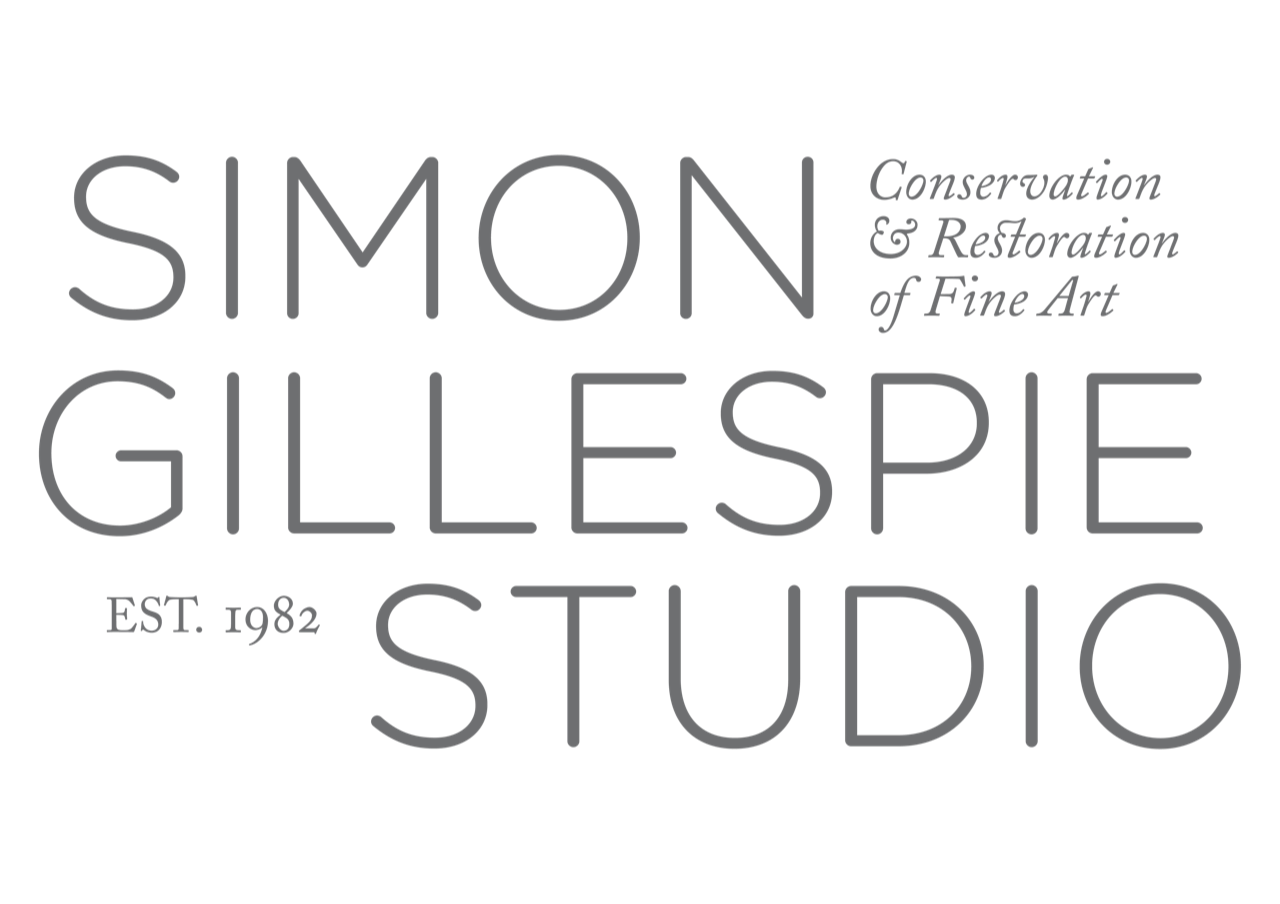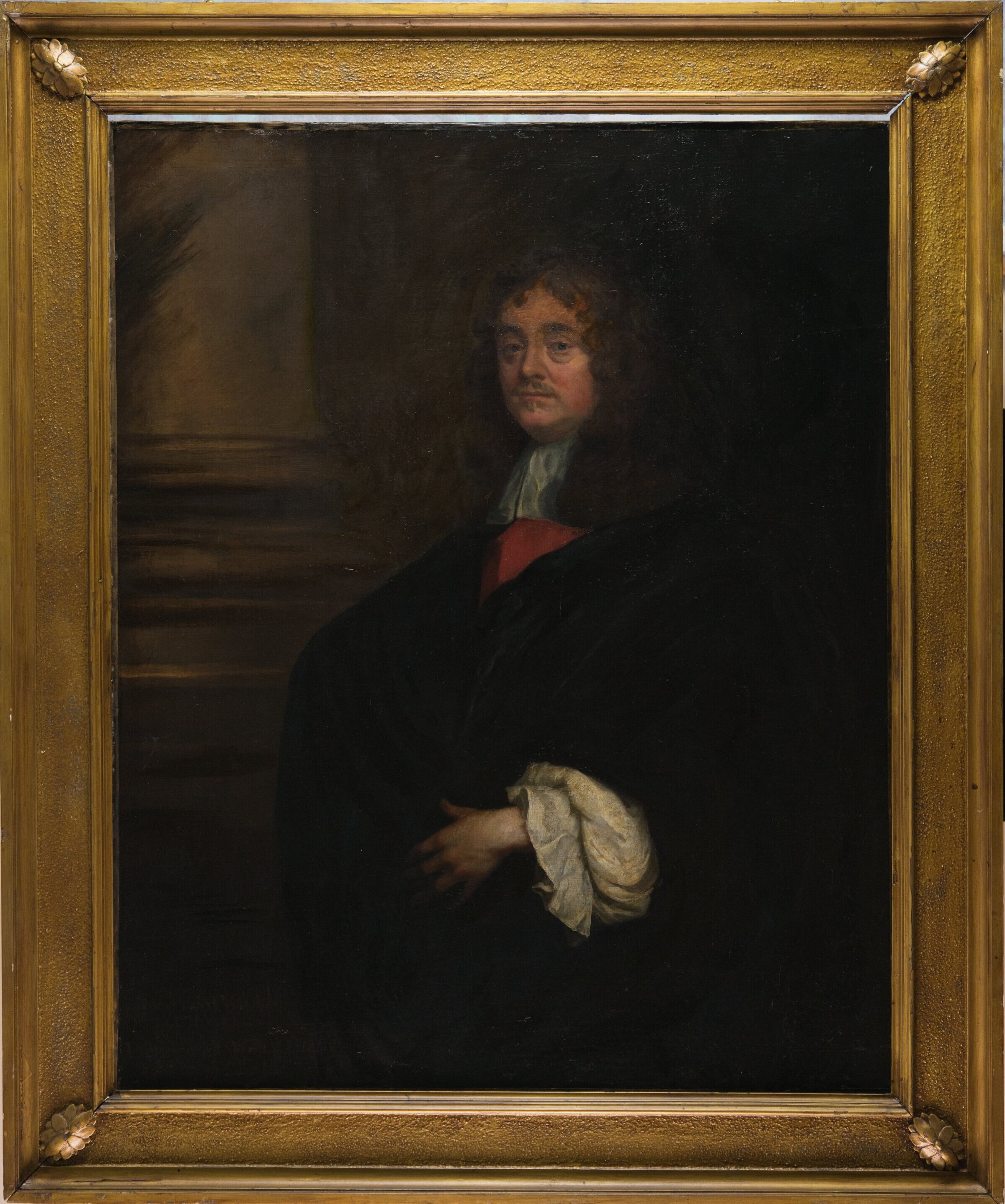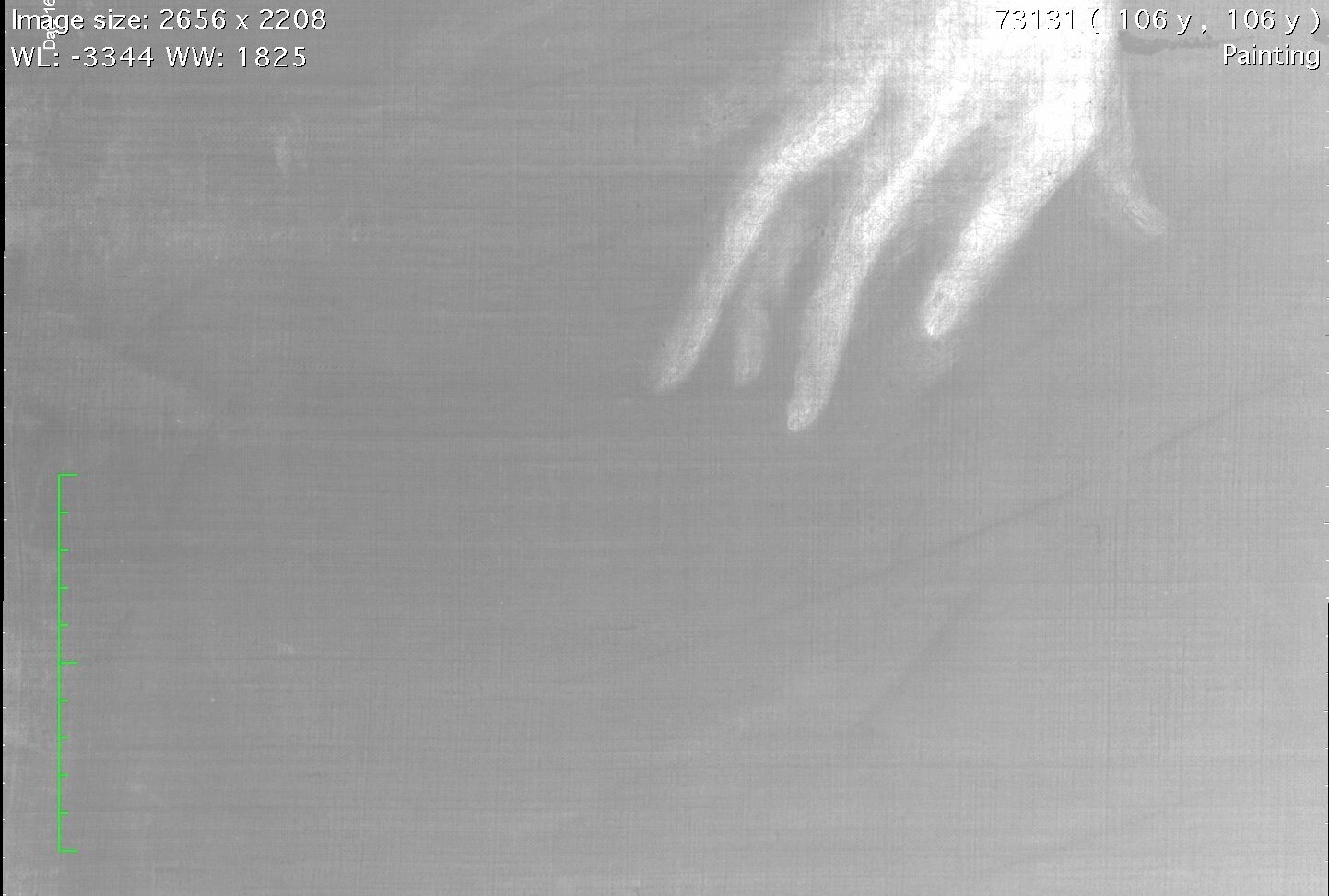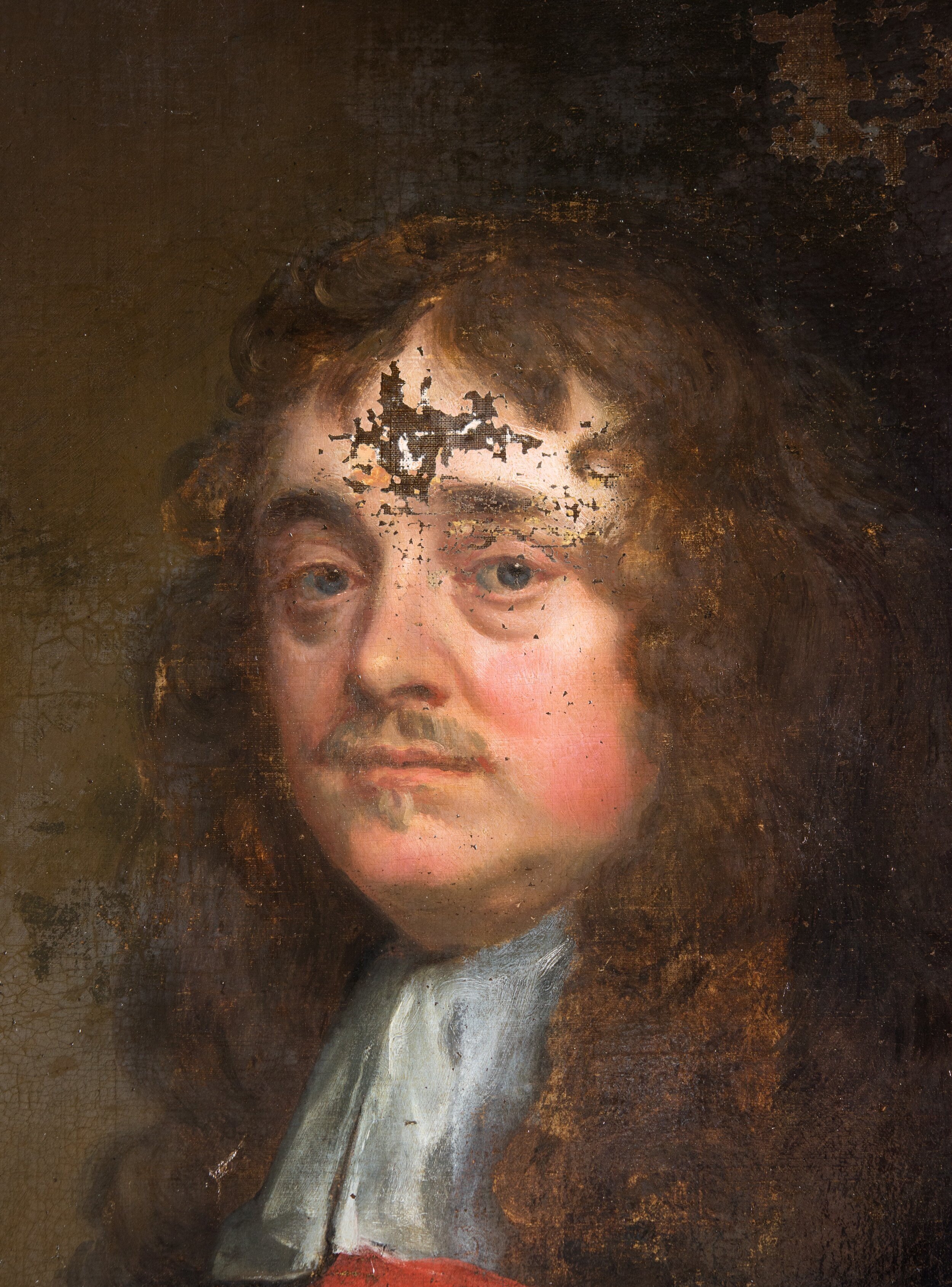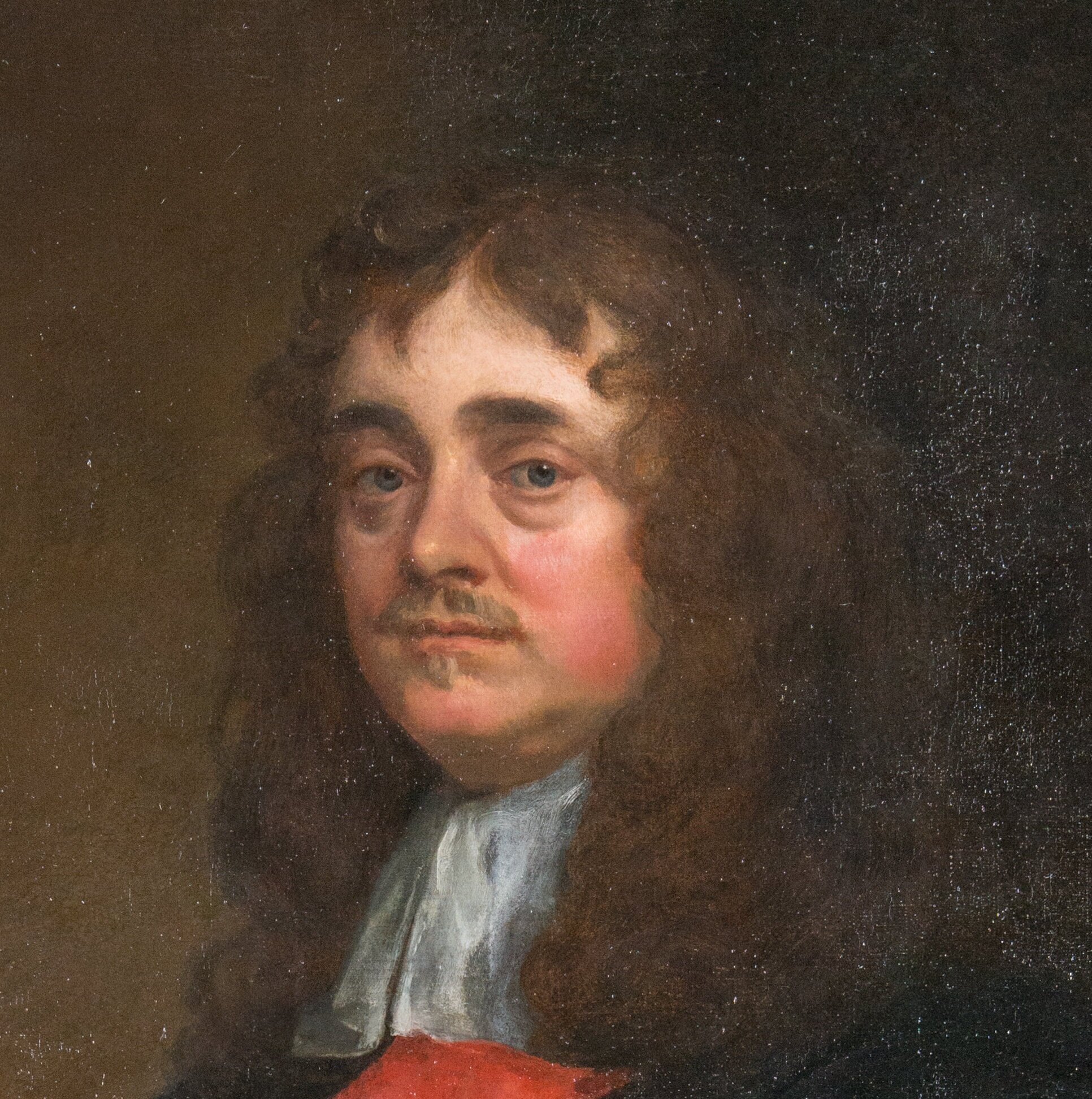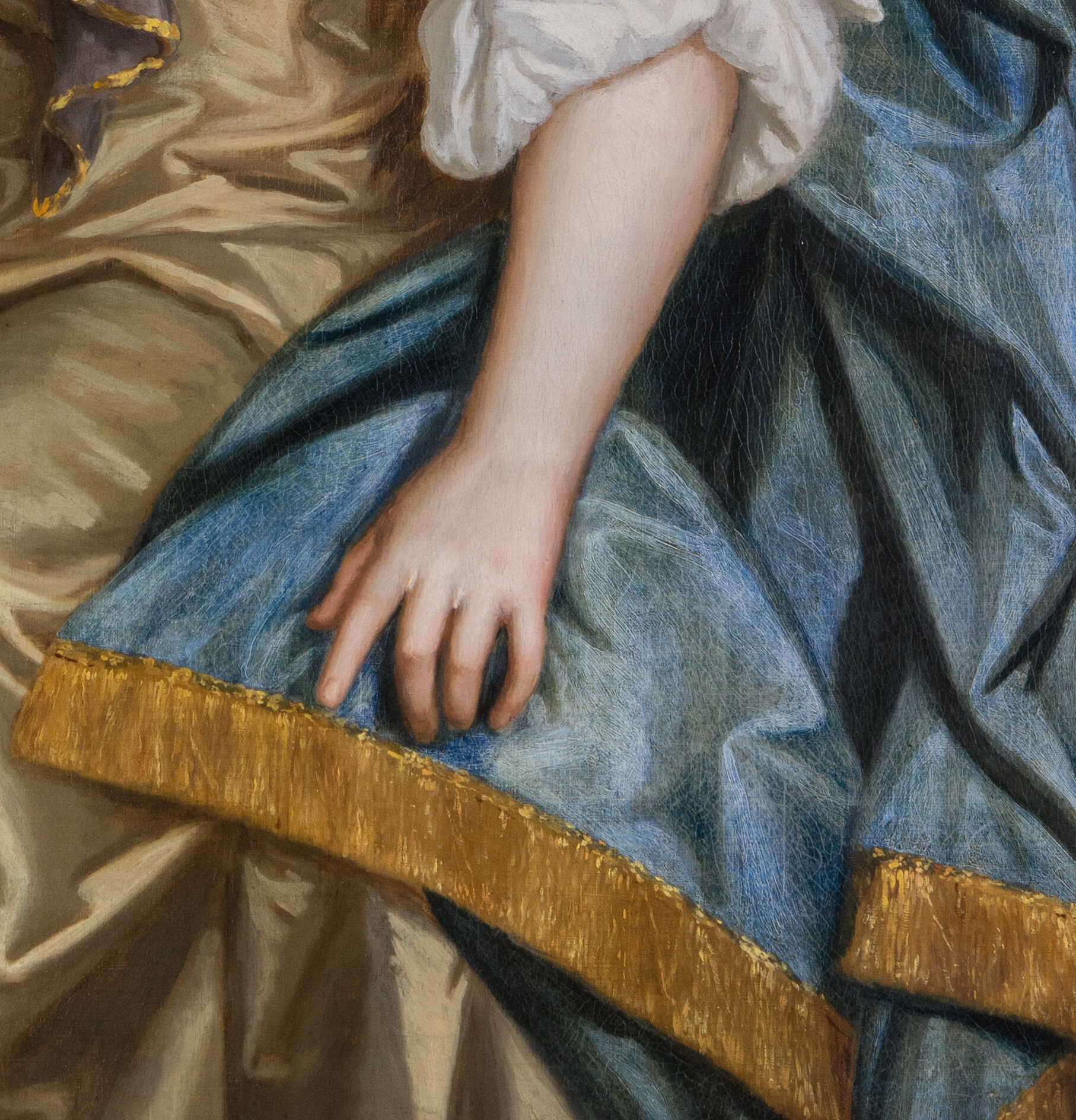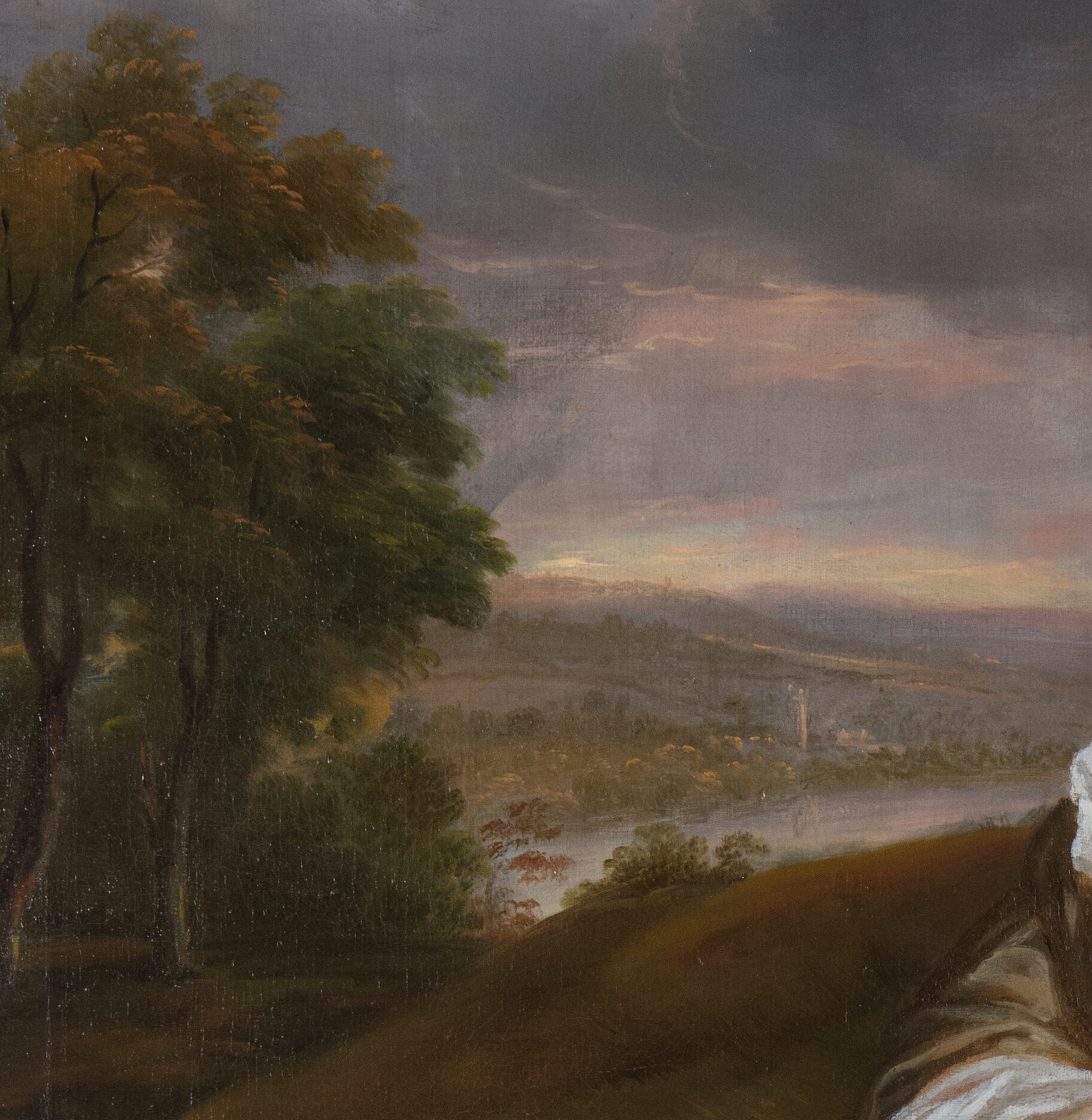‘Portrait of Richard Vaughan, 2nd Earl of Carbery’, by Peter Lely
and
‘Portrait of Frances, Countess of Carbery’, by Mary Beale
Before treatment
After treatment
Before treatment
After treatment
This pair of portraits from Carmarthenshire County Museum, depicting a 17th century nobleman and his wife, were both attributed to Peter Lely.
The male portrait had suffered from water ingress at some point in its history, which had caused the paint to flake and resulted in areas of loss. There was also evidence that the painting had suffered multiple rips large and small in the course of its life, which had been poorly repaired, causing an unsightly texture. The painting had been lined using a traditional wax method to resolve these problems but the solution was only partially successful. There was a lot of dirt on the painting and a thick shiny old varnish, as well as extensive unsympathetic overpaint over the old damages, including the forehead of the sitter. The painting had been partially cleaned in the past, when a layer of varnish had been removed from the areas of light colour but not from the darker colours. Our treatment involved removing the old lining canvas, which had been poorly applied, and applying a new one. This resolved the structural issues. We then removed the varnish layers and overpaint. The original paint was found to be very sensitive to cleaning solvents or even gels, so this was particularly slow and precise work. Areas of damage were carefully retouched, taking care not to cover the original paint.
The female portrait required comparatively little work, having undergone sensitive treatment in the relatively recent past. There were a few areas of abrasion to the paint layer, which had some unsympathetic overpaint, for example in the face around the top of the head and in the nostrils. Our treatment resulted in only a subtle change, but one which was crucial for getting the painting recognised as being not by Peter Lely but by Mary Beale, a highly successful professional artist working in 17th century.
